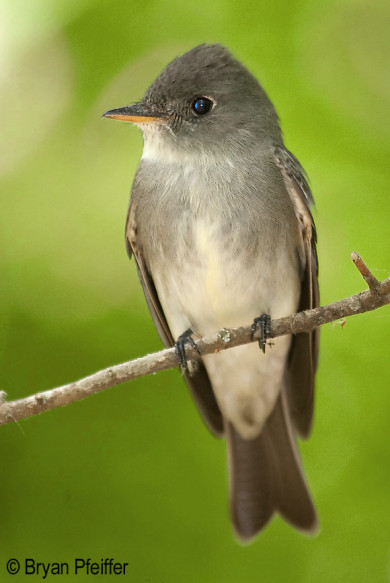Vermont would hardly be Vermont without forests, which cover 75 percent of the state. Forests provide jobs, timber products, clean air and water, and countless recreational opportunities. Aside from trees, forests comprise a community of plants and animals. And among forest wildlife, no group is as iconic as birds.
Vermont forests support more than 80 species of breeding birds. Songbirds bring voice and color to our forests. The Scarlet Tanager adds a crimson blast to hardwoods. A rainbow of warblers, more than 20 species, spans forest niches from lowland swamps to mountain summits. And Vermont’s state bird, the Hermit Thrush, issues an ethereal, fluty song that hangs like mist in the woods.
Most of these songbirds are insectivores that appear to play a crucial role in sustaining the ecological balance and productivity of forests. A classic study in the 1990s demonstrated that forest songbirds significantly increase tree growth by consuming leaf-eating insects, and that a decline in bird abundance could dramatically reduce forest productivity and health.
But our forests and their birds now face more pervasive and urgent threats:
- Non-Native Invasive Species – More than half of Vermont’s tree species are threatened with devastation from non-native forest pests, including the emerald ash borer, Asian long-horned beetle, hemlock wooly adelgid, and and a nematode that causes beech leaf disease.
- Climate Change – A warming planet may gradually but profoundly alter biodiversity, productivity, and economics of our forests. Scientists in Vermont have already detected changes in the distribution of tree species in high elevation spruce-fir forests.
- Acid Deposition – In addition to increasing winter injury to red spruce, acidic compounds in rain, snow, and fog leach valuable nutrients from soils, limiting their availability for tree growth. Of particular concern is calcium depletion and increased aluminum toxicity, which have been shown to harm sugar maple and reduce the abundance of amphibians and Wood Thrush.
With these and other threats in mind, VCE is poised to lauch a new phase of this project: more rigorous data analysis. Awaiting discovery from FBMP’s rich data set is a bounty of insights. Which bird species are declining? Which are increasing? What forest types hold the most bird diversity? Where might that diversity be most at risk? What can Vermonters do to protect and enhance their state’s birds and forests? How can this innovative Vermont study inform prospects for birds and forests elsewhere?

